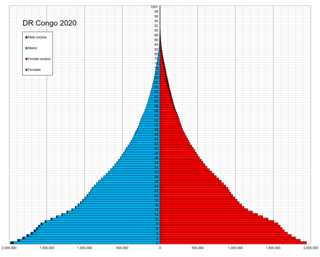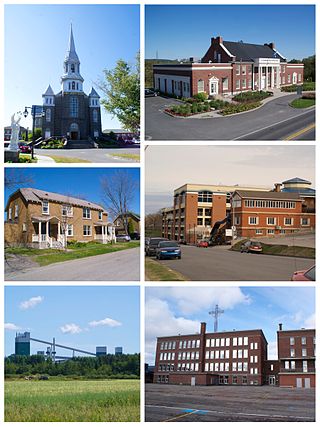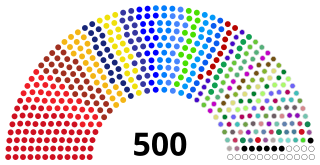
Demographic features of the population of the Democratic Republic of the Congo include ethnicity, education level, health, economic status, religious affiliations and other aspects of the population.

Alma is a town in Saguenay–Lac-Saint-Jean, in the Canadian province of Quebec.

South Kivu is one of 26 provinces of the Democratic Republic of the Congo (DRC). Its capital is Bukavu.

The Third Republic of the Democratic Republic of the Congo is a unitary state with a five-level hierarchy of types of administrative division. There are nine different types of country subdivision in a new hierarchy with no new types but with two from the previous one abolished.

Kouilou is a department of the Republic of the Congo. Covering the country's coastline, it has an area of 13,650 square kilometres and at the start of 2023 it was home to about 97,362 people. The department borders Niari Department, the commune of Pointe-Noire, and internationally, Gabon and the Cabinda area of Angola.

Kisangani is the capital of Tshopo province in the Democratic Republic of the Congo. It is the fifth most populous urban area in the country, with an estimated population of 1,312,000 in 2021, and the largest of the cities that lie in the tropical woodlands of the Congo.

The National Assembly is the lower house and main legislative political body of the Parliament of the Democratic Republic of the Congo. It is one of the two legislative bodies along with the Senate. The National Assembly is composed of deputies who are elected by the citizens of the DRC. The deputies serve as the voice of the people and are responsible for enacting legislation, representing their constituents' interests, and overseeing the executive branch of government. The National Assembly is responsible for deliberating and passing laws that impact the nation and its citizens. It was established by the 2006 constitution, which provided for a bicameral parliament consisting of the National Assembly and the Senate. It is located at the People's Palace in Kinshasa.
The Roman Catholic Diocese of Isangi is a Latin suffragan diocese in the ecclesiastical province of Kisangani in the Democratic Republic of the Congo.
The Roman Catholic Diocese of Lisala is a Latin Catholic diocese in the ecclesiastical province of Mbandaka-Bikoro in the Democratic Republic of the Congo, named after its see, located in the city of Lisala.
Members of the National Assembly elected for the 2006-2011 term were as follows:
Ilambi is a community in the Tshopo Province of the Democratic Republic of the Congo, on the Lomami River. It is 20 kilometres (12 mi) to the south of the point where the Lomani enters the Congo River. Most of the inhabitants are Topoke people.

The Topoke people are an ethnic group that live in the Isangi Territory south of the Congo River, downstream from Kisangani in the Tshopo Province of the Democratic Republic of the Congo. They speak the Poke language, in the Soko–Kele languages group of Bantu languages.
The Poke language, is in the Soko–Kele languages group of Bantu languages. It is spoken by the Topoke people of the Tshopo District, Isangi Territory, in the Democratic Republic of the Congo.
Yaboila is a village in the Isangi Territory of the Democratic Republic of the Congo.
The Turumbu people are a Bantu ethnic group living in the Democratic Republic of the Congo, mostly in the Isangi Territory of the Tshopo Province on both sides of the Congo River. They speak the Lombo language. As of 1971 their population was estimated to be 10,000. A more recent estimate put the population at 32,000.
Yangambi is a town in Isangi territory of Tshopo province, Democratic Republic of the Congo.
Isangi is a town in the Tshopo Province of the Democratic Republic of the Congo, headquarters of Isangi Territory.

Tshopo is one of the 21 new provinces of the Democratic Republic of the Congo created in the 2015 repartitioning. It is situated in the north central part of the country on the Tshopo River, for which it is named.

Lulua District was a district of the Belgian Congo and the Democratic Republic of the Congo. The city of Kananga was at the center of the district, but had a separate administration. In 2015 Lulua District became the province of Kasaï-Central.
Bolomba Territory is an administrative area in Équateur Province in the Democratic Republic of the Congo. The headquarters is the town of Bolomba. It is located northeast of the provincial capital of Mbandaka. Its main waterway is the Ikelemba River which is navigable down to the Congo River.










